8. Woman in the Dunes (1964)
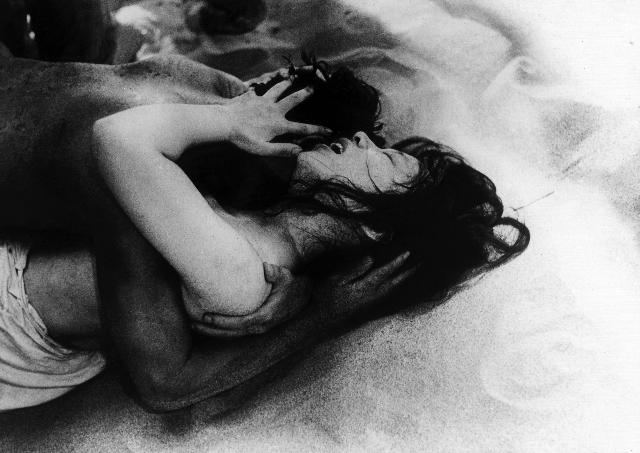
Hiroshi Teshigahara frequently adapted works from one of the most important postwar Japanese authors, Kobo Abe, into the big screen. “Pitfall” (Otoshiana) (1962) and “The Face of Another” (Tanin no Kao) (1966) are acclaimed movies based on the work of Abe. But the most important adaptation Teshigahara ever created was “Woman in the Dunes.” It a cornerstone of Japanese cinema and a great start for anyone introduced to it.
The plot follows an entomologist who, while searching for an insect in the desert, is tricked by some villagers into a pit of sand where only a woman lives. Her sole purpose is shoveling sand for the local village in return for water and food. The protagonist’s daunting escape attempts, one after another, prove futile as he is always dragged to the bottom just before reaching the exit. A clear reference to the myth of Sisyphus.
The direction is as claustrophobic as it can get, and the cinematography by Hiroshi Segawa spectacular, using wide shots of sand and panoramic view of the pit to maximize the sense of hopelessness and desperation.
The experimental soundtrack in the background mainly consists of low-key noise setting the tone of the film. The ever-flowing sand, the house buried under it, and the actions of the protagonists are the main allegories about human society and the way it is structured, as well as a contemplation of human existence in general.
A truly enthralling piece of art that stays relevant to this day.
7. City of Lost Children (1995)
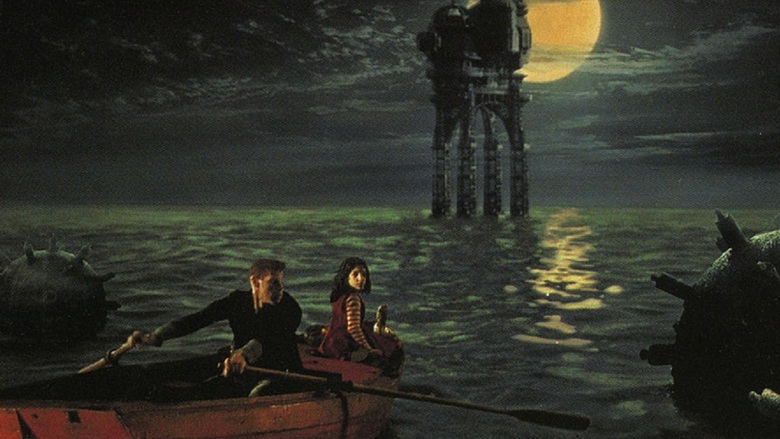
Stunning dark imagery and nightmarish characters were no strangers to the work of Jean-Pierre Jeunet and Marc Caro. In this second collaborative feature, we are given the chance to dream walk, together with circus strongman One and orphan Miette, the gloomy streets of a port city and the hellish oil rigs nearby, where the most fantastic experiments have been taking place.
The oil rigs constitute the home of an amnesiac scientist’s creations, six cloned children: Irvin, a brain contained in a vat; a dwarf named Martha; and evil Krank, who, unable to dream, ages prematurely. To put a stop to this, a group of part-mechanical men are employed to kidnap children from the city in order to steal their dreams. In their criminal net falls One’s little brother, so One, with the help of Miette and her band of orphan muggers, set out to save him and the rest of the kidnapped children.
In this city, the sun never seems to shine; the constant yellowish night and the ominous steampunk environment give viewers the impression they are dreaming, keeping them in a hypnotic haze while rushing with the protagonists through that damp maze of a city. The sensation is maximized by the costumes created by none other than Jean-Paul Gaultier, and the haunting musical score composed by Angelo Badalamenti.
6. The Piano Tuner of Earthquakes (2005)
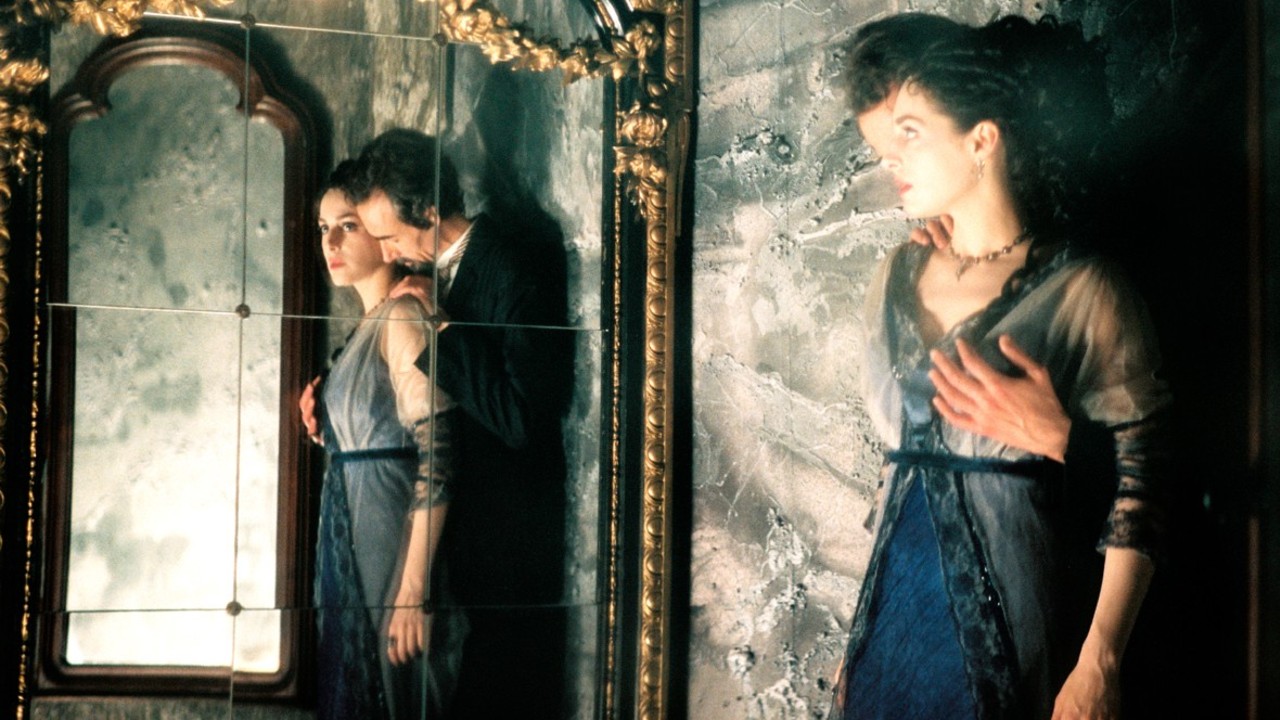
Stephen and Timothy Quay have been legends in their craft, influencing animation and the experimental scene since the 80s, and their work is absolutely monumental. From their short films like “Street of Crocodiles” (1986) and “The Comb” (1988) to actual feature films like “The Piano Tuner of Earthquakes,” they perpetuate true surrealism, dark fairytales and folklore, and an aesthetic long buried by time and the dust of old attics.
They mainly use puppetry, porcelain dolls, everyday household items and sewing material, utilizing stop-motion animation to its full potential. Their main influences are pioneer Russian puppet animator Ladislas Starewitch, Czech stop-motion animation master Jan Svankmajer and Franz Kafka, among others. Still, the Quay Brothers have their distinct style which reached its peak in “The Piano Tuner of Earthquakes,” blending live action with stop-motion animation.
It is a complex story about an opera singer named Malvina von Stille (possible reference to their other work called “Stille Nacht”) who was abducted by a nefarious doctor who stages his own opera of mechanical automata. A skilled piano tuner named Felisberto Fernandez is hired by the doctor to polish his automatons. Amnesiac Malvina is drawn to the piano tuner due to his resemblance to her fiancé.
It is a gripping fairy tale about love and loss while maintaining a dreamy, sometimes creepy atmosphere. The stop-motion animation adds to the creepiness, but also makes the viewer care for the automatons as they come to life. It is a truly spellbinding feeling seeing inanimate objects come to life and interact with the real world. Though the movie is mainly focused on live action, the animated sequences are the ones that stand out.
The pace is relatively slow, and the narration complex. Still, the movie manages to maintain its atmosphere and tone throughout. Brothers Quay strayed from their usual path of surrealism set by their short films, making a unique film rarely seen in modern cinema.
5. Angel’s Egg (1985)
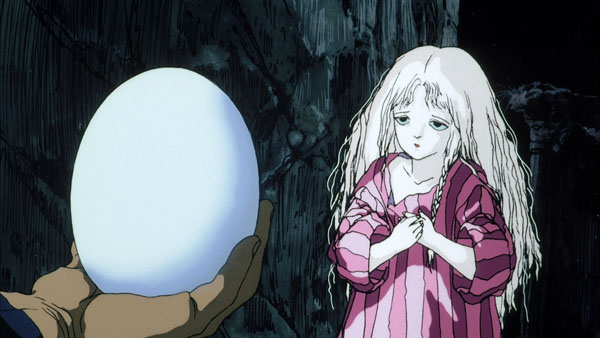
Ten years before he created “Ghost in the Shell” (1995), Mamoru Oshii collaborated with the legendary Yoshitaka Amano to create another masterpiece of the animation genre that goes by name of “Angel’s Egg,” one of the most surreal movie experiences a moviegoer may have.
The plot follows a little girl wandering a bleak, desolate plane carrying a mysterious egg. Soon she is joined by another figure carrying a large cross, claiming that will protect her and the egg throughout her pilgrimage. But nothing is as it seems and the egg she holds so dear is in danger. This is as far as the plot synopsis can go without spoiling any crucial points of the film.
The movie is an allegory which can be interpreted in many different ways, depending on the viewer and their personal experiences. For Oshii, the movie is about the collapse of his belief system when he lost his faith in Christianity. However, to this day he claims he doesn’t really know what this movie is all about.
This ambiguity is what makes the film that enduring and worth investing in. One can interpret the egg, the abandoned shadow lurking city, the girl, the wanderer and every other otherworldly image however they see fit. Especially because the ending doesn’t provide any closure and is as vague and ambiguous as it can get.
This is why “Angel’s Egg” is often described as art rather than as an animated film. Just like an abstract painting that everyone sees differently, encouraging discussion and multiple viewings. The most hypnotic aspect of the movie is its gothic atmosphere, philosophical tone, and the constant desire to learn what this mysterious egg symbolizes.
Themes of faith, religion, death, devotion and purpose are tackled along with many more existential questions. Its biblical references are plenty, some easy to spot, with others well hidden in the gothic, surreal landscape.
It is a highly visual, heavy-themed movie, and a truly rewarding experience to get lost into.
4. The Company of Wolves (1984)
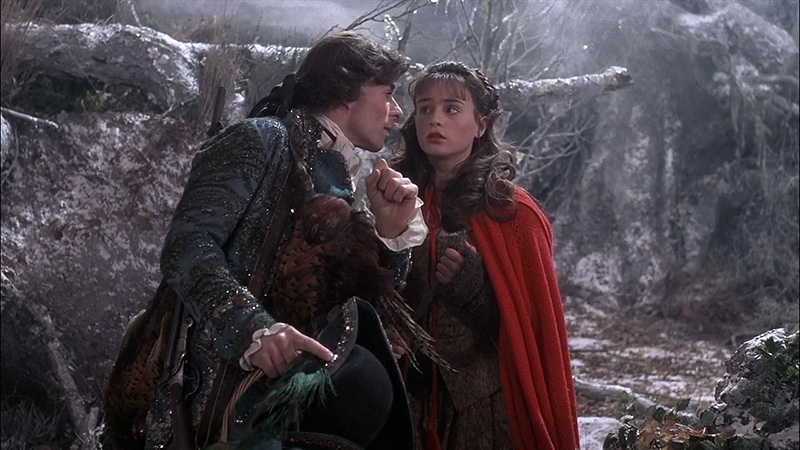
Neil Jordan is mostly known for “The Crying Game” (1992) and “Interview with a Vampire” (1994), but he has an extensive catalogue of great films worth discovering. One prime example is his second feature film called “The Company of Wolves.”
This is one of the most ethereal and magical movies ever created. It is a true fairy tale heavily inspired by Grimm Brothers’ stories and Western folklore. But unlike other fantastical and fairytale-like films, this one feels genuine and real. It actually makes the audience feel like their own grandmother is narrating the story in front of a cottage fireplace on a cold, windy night. That’s the kind of feeling it conveys.
The plot is loosely based on the famous tale of Red Riding Hood, but mostly on Angela Carter’s story of the same name, expanding the lore and making up some interesting plot points. The production design is absolutely breathtaking, the distinct 80’s practical effects add up to the magic, and the cinematography and lighting are superb.
A fact worth mentioning is that the movie embellishes the common image of wolf who is considered a villain, a ”bad” animal in folklore. The scene with the transforming wolf girl treated by the priest is particularly touching. Wolves are not cruel, they are just wild animals driven by instinct. A man should by no means be arrogant in judging nature. It is a wonderful message and moral told subtly through top notch dialogue.
And this is just an example of what the movie has to offer. The soundtrack, composed by George Fenton using traditional instruments, is also mesmerizing and well suited to the gothic atmosphere. One can also spot cameos of great actors like Stephen Rea (a common collaborator of Jordan), Terence Stamp, Graham Crowden and Jim Carter, among others, making the experience even more entertaining.
It is a hauntingly beautiful and lyrical film, criminally underrated, but standing among the greatest of its kind. A true must.
3. Amer (2009)
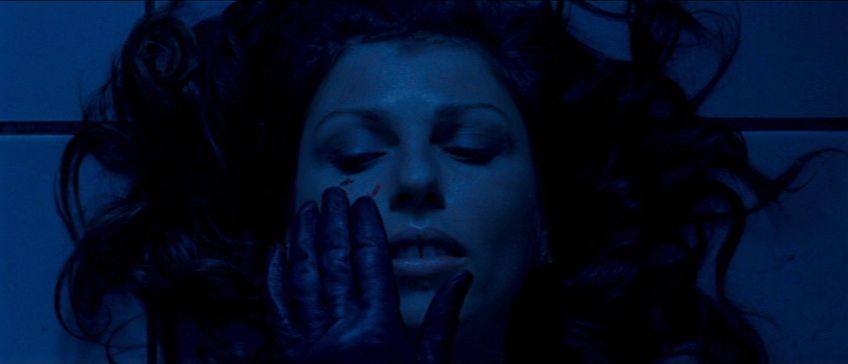
It is highly possible that the works of Hélène Cattet and Bruno Forzani are the only ones that have captured the female orgasm so accurately. Every single piece of their regrettably short, but thankfully masterful work, is highly sensual, and “Amer” is no exception. In this film, death, fear and eroticism blend into each other irrevocably as the viewer witnesses three phases of Ana’s life.
First, still as a child, the death of her grandfather and the first contact with carnal love leave a mark on Ana’s heart, as well as on her body. This section is completely dark, with the stark contrast of neon colors used to portray successful intercourse. Just a couple of words are uttered, but no more would ever be needed.
In the second crucial moment, we learn that in the proper hands, even a short trip to the grocery store can be sensuous. Ana is a teenager, and walking by her mother to town, she gets to enjoy all the little arousing events of everyday life that always go amiss: the stroke of the wind between the legs, a meaningful male stare or sucking on a strand of hair. Ana, though reluctant, dares look danger and sex in the eyes under the brilliant sun of the Mediterranean.
Finally, as an adult, Ana returns to her decrepit childhood home. The breeze and plants tear at her dress, the dazzling sunshine blends with the lascivious shadows of the abandoned building, the water in the bath penetrates her, and everything is an invitation to sex. Ana has grown to her full bodily potential and does not hesitate to go to extremes, as pain and danger are very much included in the process of pleasure.
The almost nonexistent dialogue, the light and dark exchanges, and the general sensuality of practically everything in the general environment give the viewers a voyeuristic enjoyment, and have them glued to the screen, half dreaming, wanting nothing else but more.
2. Enter The Void (2009)
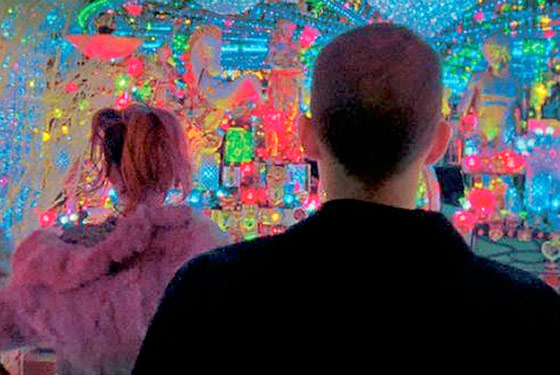
The third full length film of visionary director Gaspar Noe is a true visual masterpiece. It is a two and half hours long film that is more of an experience than an actual movie. It is violent, trippy, thought provoking and utterly gut wrenching.
The plot is pretty basic. A drug dealer named Oscar is fatally shot after a confrontation with the Japanese police in an underground bar located in Tokyo’s Shinjuku district. Meanwhile, his sister is a stripper, trying to get by in the hostile Japanese metropolis. After his death, his spirit rises, wandering the streets, observing his sister’s life and her encounters with others. But most importantly, he seeks redemption and actual purpose by trying to protect his sister and prevent her from harm and mindless decisions.
The plot of the film deals with really heavy issues. Issues about death, about one’s purpose in life, about loneliness and regret. It is a downward spiral of despair told without words, only images. It is probably one of the most colorful movies ever made, surrounded by neon lights, abstract shapes and hallucinations created by drugs. It is a bad acid trip told through the eyes of Oscar.
The camera work is really tricky, using the first person perspective masterfully, manipulating the transcendence of Oscar’s soul to show complex and sometimes obscene imagery. For example, there are great panoramic views of Tokyo, passing through dodgy back alleys, a scene where the camera invades a love hotel showing a rather graphic intercourse scene, and through a flashback, an absolutely terrifying car crash, far too realistic for the unprepared viewer.
Noe, a great pioneer in modern cinema in combining influences from Stanley Kubrick and Kenneth Anger to name a few, is obsessed with sex and violence but also philosophical matters and human nature.
The violent opening credit sequence predisposes the viewer about the rest of the film enthralling him in its bleak world. But perhaps the most hypnotic aspect of the movie is not its neon-drenched imagery, not its abstract hallucination sequences, but the insightful commentary about the afterlife, and the general pessimism that thrives throughout.
Noe managed to create an otherworldly, bleak world which is strangely beautiful in its ugliness, making it impossible to look away until the last credits roll. And the actual question still remains: is there anything else but the void? A true masterpiece.
1. The Mirror (1975)
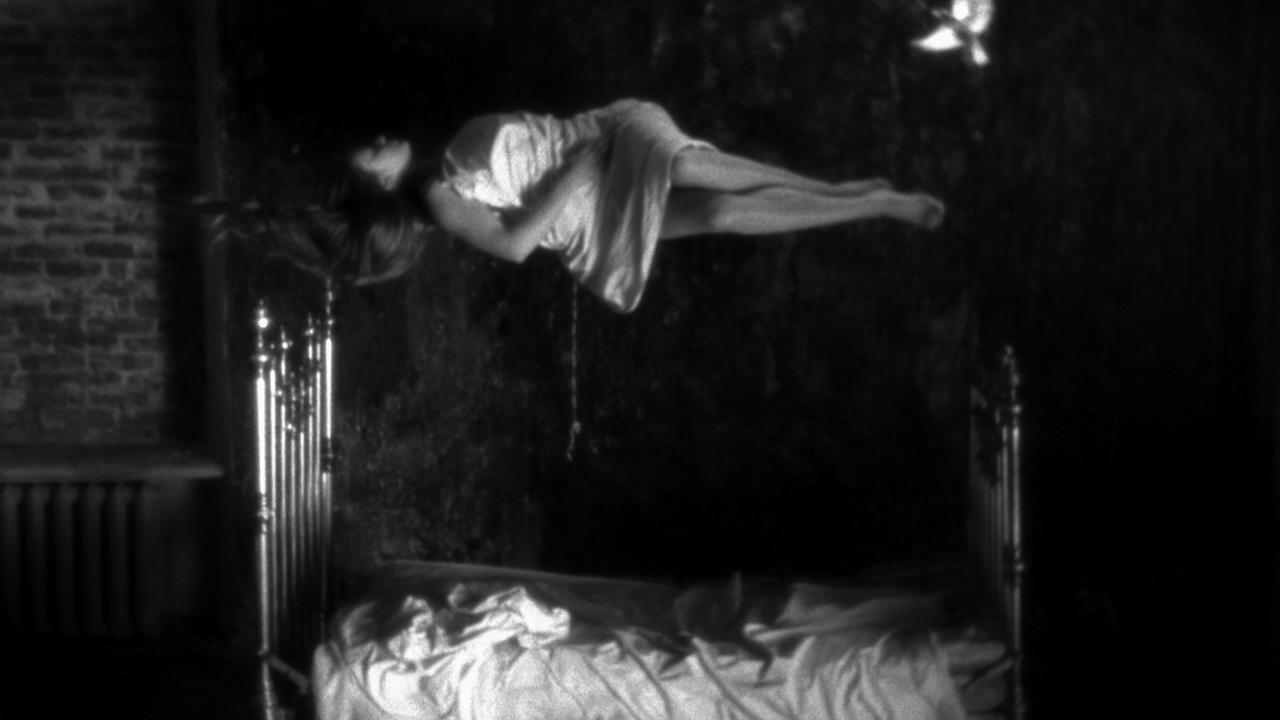
Andrei Tarkovsky’s influence on cinema has already reached mythic proportions. Every piece of his work is piece of art, an actual poem told through spellbinding images. One of the most important creations of Tarkovsky is the loosely autobiographical “The Mirror.”
It is a nonlinear story about a dying man reminiscing about his past life, his childhood, his days in war, his parents, and his broken family. It is a highly personal self-referential film (for example, the poster for “Andrei Rublev” on the wall), including poems from Tarkovsky’s father, acting by his mother and wife, and his own experiences.
The cinematography switches constantly between full color, sepia, and black and white; there is no coherence in the narrative, making the experience even more oneiric. There is a truly hypnotizing feeling, seeing a man’s life unfold before your eyes, narrated in such poetic way.
Sometimes it is hard to keep up with the sudden switch in tone and the confusing narrative, but it also really touching. Tarkovsky allows the viewer to witness the scattered memories of a dying man (who could be Tarkovsky’s own father) and the cohesion of his thought. The human mind mostly functions incoherently, jumping from one thought to the other, not like a predetermined plot. That’s the general idea of the film.
Every frame could easily be a painting, the camera work with the long takes is phenomenal, every word spoken has a meaning, and every inconsistent thought has its place. It is one of those movies that leaves the moviegoer lost in thought about their life.
Author Bio: Diamantakos Yannis’ main studies consist of economics and law. Although he didn’t have the opportunity to study filmmaking like he always wanted, his passion for cinema, developed in a young age, never waned. On the contrary, it never stopped growing. He has been making lists and reviewing movies for years in his own website and is more than eager to disseminate his unceasing infatuation with cinema and its unparalleled magic.